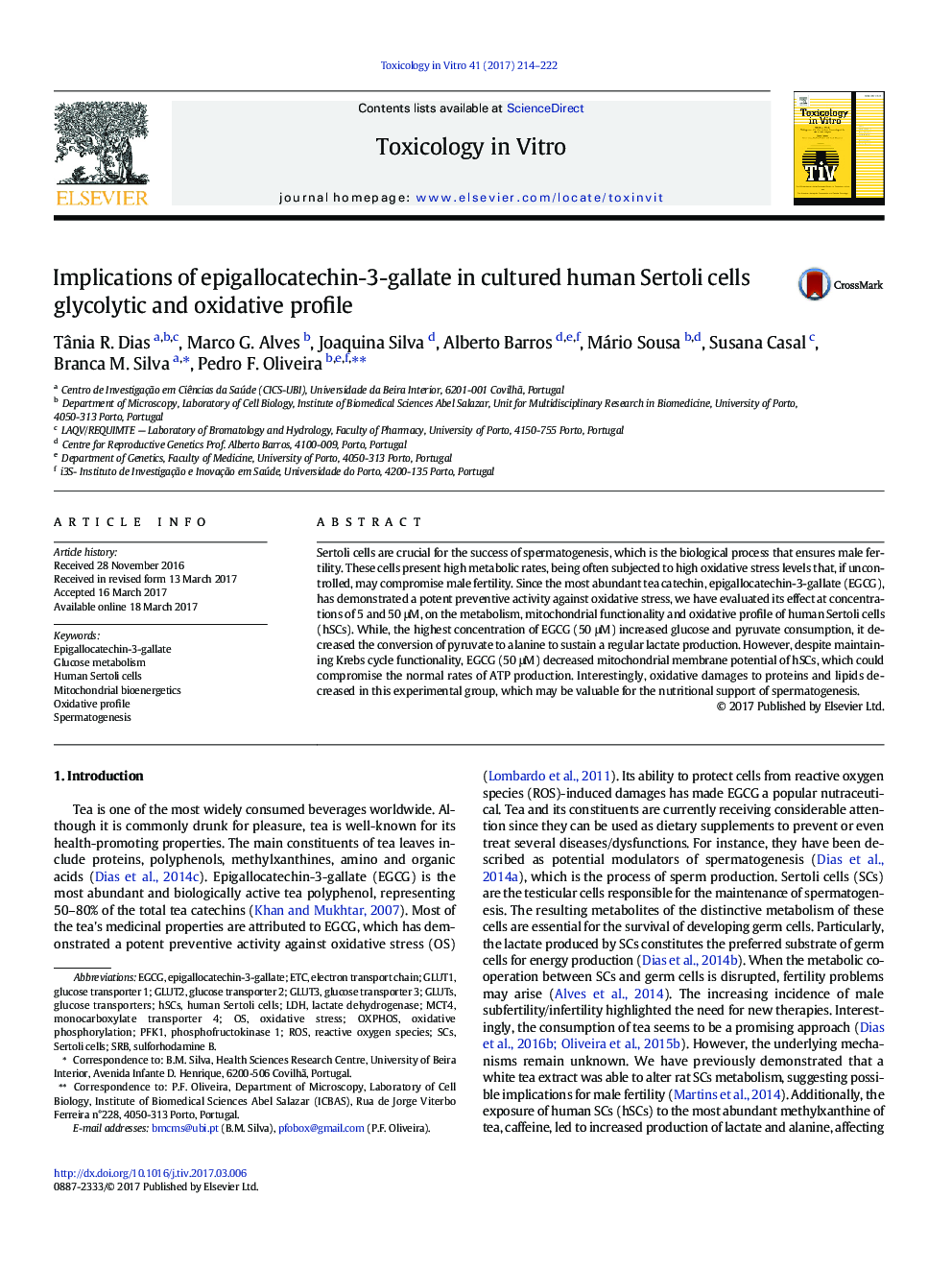| Article ID | Journal | Published Year | Pages | File Type |
|---|---|---|---|---|
| 5562678 | Toxicology in Vitro | 2017 | 9 Pages |
â¢Epigallocatechin-3-gallate has an anti-proliferative effect on Sertoli cells.â¢Epigallocatechin-3-gallate modulates human Sertoli cells metabolism.â¢Sertoli cells mitochondrial potential decreases with epigallocatechin-3-gallate.â¢Krebs cycle is preserved in Sertoli cells exposed to epigallocatechin-3-gallate.â¢Oxidative damages decrease in Sertoli cells exposed to epigallocatechin-3-gallate.
Sertoli cells are crucial for the success of spermatogenesis, which is the biological process that ensures male fertility. These cells present high metabolic rates, being often subjected to high oxidative stress levels that, if uncontrolled, may compromise male fertility. Since the most abundant tea catechin, epigallocatechin-3-gallate (EGCG), has demonstrated a potent preventive activity against oxidative stress, we have evaluated its effect at concentrations of 5 and 50 μM, on the metabolism, mitochondrial functionality and oxidative profile of human Sertoli cells (hSCs). While, the highest concentration of EGCG (50 μM) increased glucose and pyruvate consumption, it decreased the conversion of pyruvate to alanine to sustain a regular lactate production. However, despite maintaining Krebs cycle functionality, EGCG (50 μM) decreased mitochondrial membrane potential of hSCs, which could compromise the normal rates of ATP production. Interestingly, oxidative damages to proteins and lipids decreased in this experimental group, which may be valuable for the nutritional support of spermatogenesis.
Graphical abstractDownload high-res image (178KB)Download full-size image
